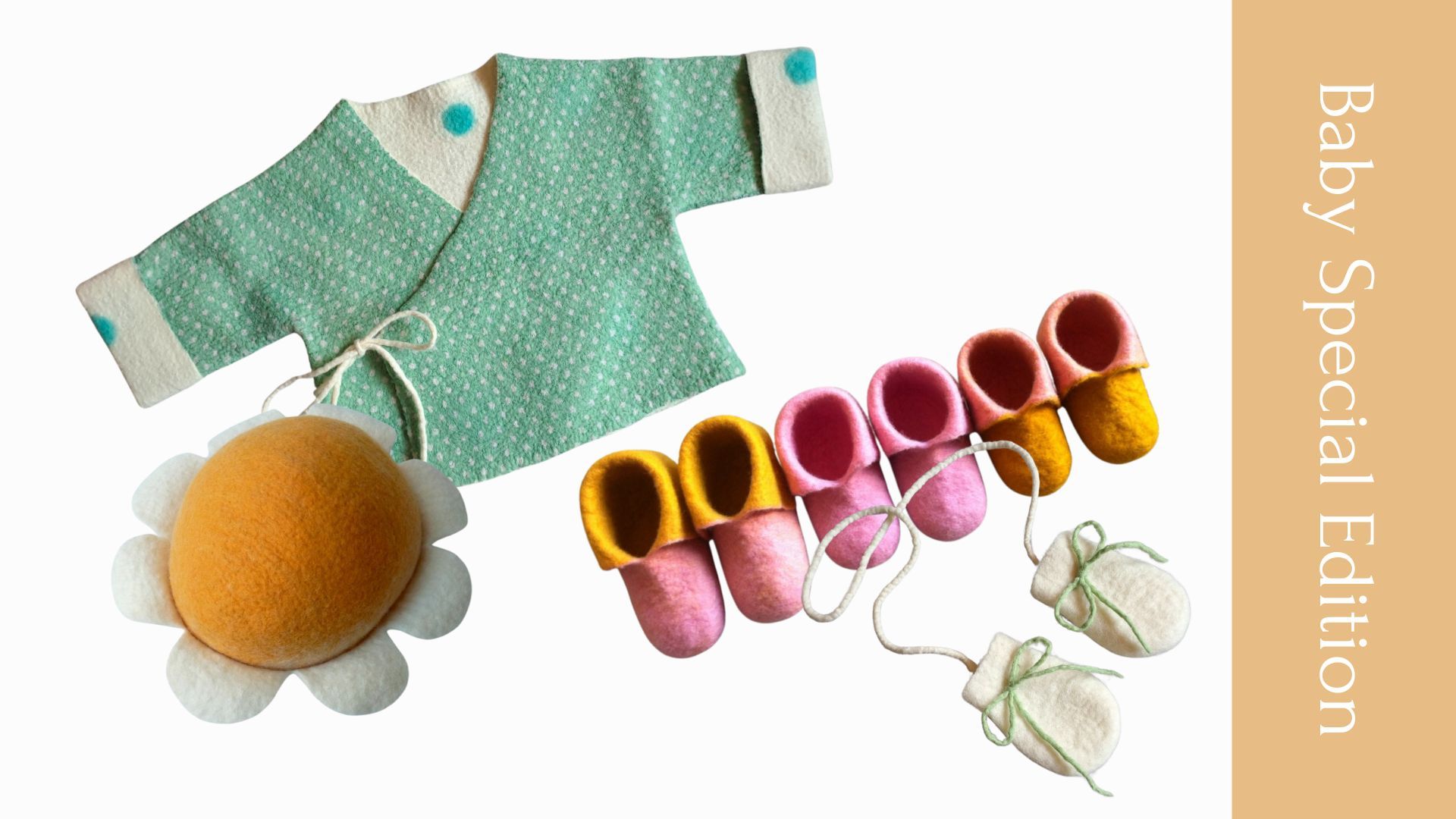The Dodo Blog
In the last couple of weeks, I’ve been making big pre-felt sheets for a piece I’m working on. And every single one of them has given me problems felting.
This can happen for several reasons. It either has something to do with the amount of soap or water, or with the temperature. When this happens, ...
This is a question I know you’re asking yourself: Is the Baby Special Edition worth it?
That’s, of course, something only you can decide. But skimming through the class description will only give you a general idea. So, I’ve made a video to show you exactly what’s inside the “baby package”.
It’s ...
Today I’m bringing you something special, the Baby Special Edition.
Usually, you can only get these classes separately.
Now, for a limited time, I’m combining the Sweet Baby Jacket & Daisy Baby Hat with the Comfy Baby Booties & Tiny Baby Mittens in one package. In other words, you get 2 for the pr...
This video is the first one of a new series, in which we’ll be looking into the topic of making cords or ropes in wet felting.
While it’s more geared towards beginner felt makers, I know that many more experienced people also struggle with this. During my years as a felting teacher, I’ve gotten man...
So you had a look at the program, and now you’re thinking “Yes, one technique a month. But what do we really felt inside THE DODO HUB?”
I get that it may not be totally clear to you, so let me help you with that.
First, above there's a short video of some of the beautiful pieces made by the partic...
If you’ve been waiting to enroll in THE DODO HUB, I’ve got good news! The registration is open as of now.
Are you new to the DODO world, and not sure what THE DODO HUB is?
- It’s a comprehensive year-long program designed to take you from the intermediate level to an advanced and independent ...
Are you looking for an original gift for someone who loves wet felting?
Look no further! Now, you can also purchase ANY of these classes as a gift for someone you love.
How does this work?
1. Click the links below to go to each course page.
When I created THE DODO HUB, my year-long program, in 2023, many felt makers said that one year was too long for them. But they were interested in some of the topics covered in the program.
So, to give everyone the chance to participate, I started offering some of the classes separately. You’d get ...
THE STORY BEHIND THIS PROJECT
I belong to a small felt club that gets together once a month via Zoom to felt in a group setting.
In our December meeting, the suggestion was that we create seasonal pieces. We usually felt 3D/sculptural items, and that was planned for December as well. But even thou...
In over two decades as a felt maker, I’ve been slowly collecting books on felting, to grow my knowledge, get inspiration or just know more about the pioneers of this beautiful art form. My felting library now has over 50 books, some of which I've been sharing with you on my blog and social media cha...
When we start wet felting, there is so much to learn about the many techniques that fit under this wider umbrella, that this alone can be enough for felt makers to focus on, without ever taking a deep dive into the attributes of the fibers from different sheep breeds.
So, often it’s people who have...
I don’t use stiffeners often. But sometimes they can be useful, especially for sculptural wet felting. The problem with stiffeners is finding one that doesn’t make your work very hard, and still lets your felt look natural.
As in many other aspects of felt making, there are different opinions about...








